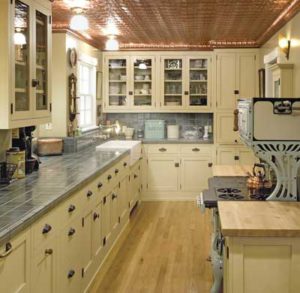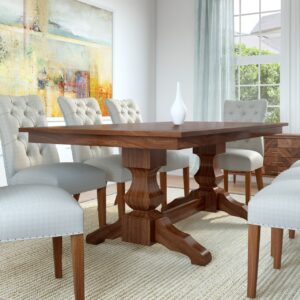“Getting up in the morning, I’d rush downstairs before work—and step into a foot or so of icy-cold Jamaica Bay water,” says Patrick Clark, who rescued this 1880s shingled cottage set close to the shore. “I hadn’t seen the water myself until after I bought the house and lived here.” His vernacular house, surrounded by wild sea grasses, sits in the lowest elevation in Rockaway, which is the far-flung, seaside corner of Queens, a borough of New York City.
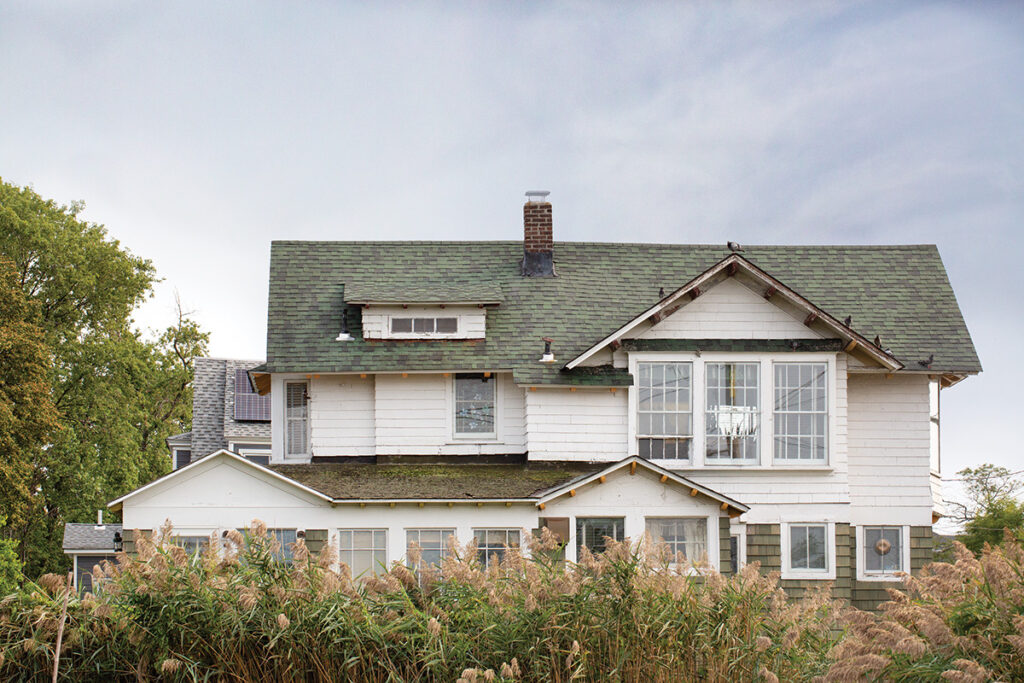
Every month, with the new moon, high tide would bring bay water into the house; a few hours later, it drained back out. “It was pretty obvious I had to raise the house,” Patrick says, “but I had no idea how to make that happen.” Clark, a renowned stained-glass conservator and artist, was working on a window commission in Southampton, Long Island, when the solution occurred to him. He saw a large mansion being jacked onto railroad ties. Patrick needled the house-raising contractor for nearly two years before he finally agreed to come out to Far Rockaway.
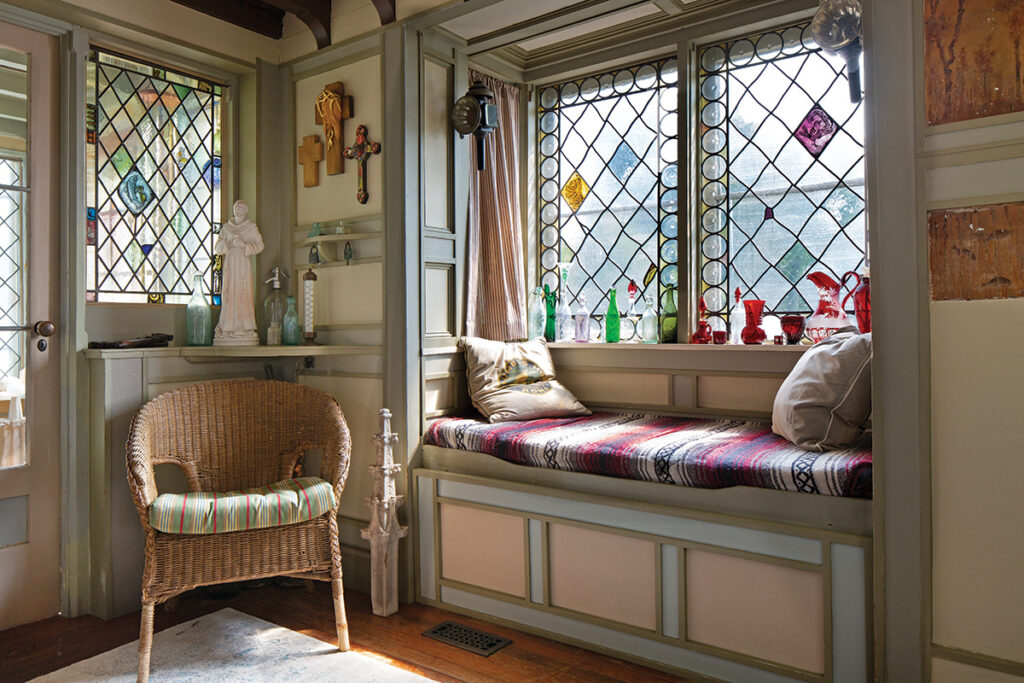
The complicated operation involved raising the cottage 12 feet in the air, then building a new, six-foot-tall cinderblock foundation to lower it down upon. “Once the house was raised, I had 30 truckloads of fill and topsoil delivered, to raise grade about three feet around the house and throughout the entire yard,” Patrick explains.
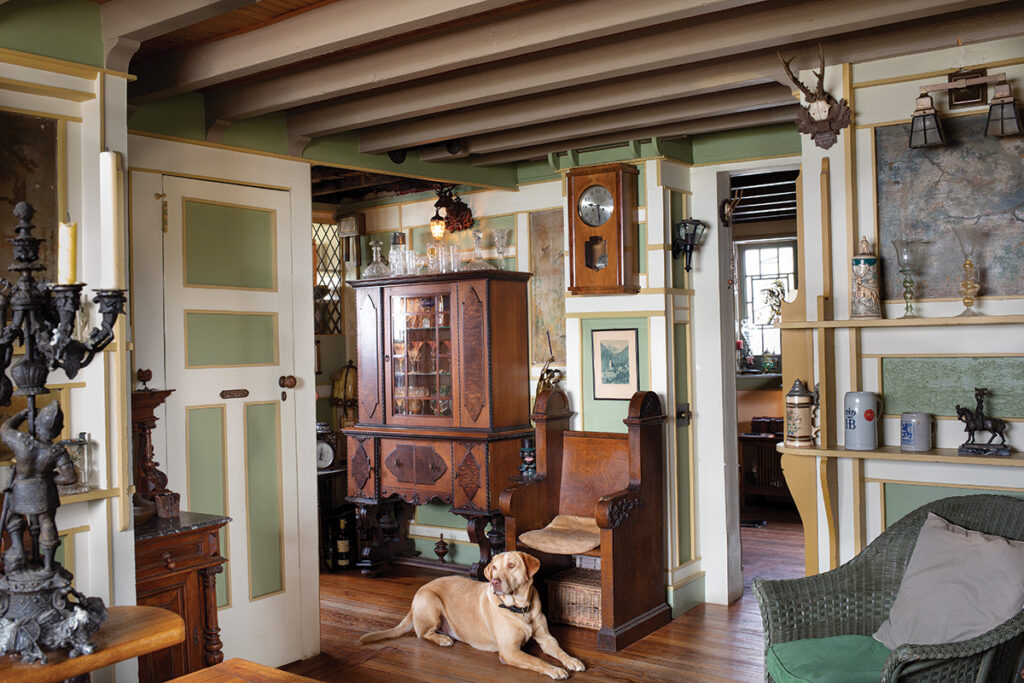
Patrick acquired the weather-beaten cottage, known as the Richard Mott House, in 1997, and has been working on it since. Built by descendants of the wealthy Mott family dating to Colonial times, the house became an art studio for son Richard. Far Rockaway, a marshy area once replete with yacht clubs and fox hunts, was a fashionable Victorian resort during the 19th century, with elaborate homes, casinos, and nightclubs. Today it is more wildlife refuge, a somewhat forgotten part of New York.
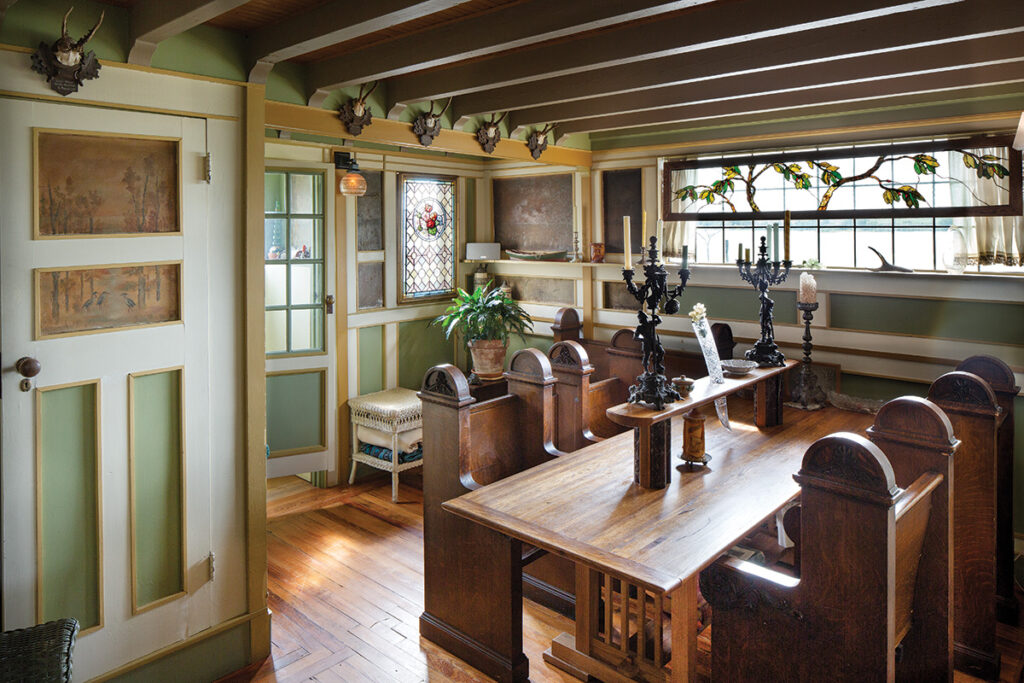
The interior was in poor condition, yet Richard Mott’s wall paintings of woodland scenes and rocky coasts had survived intact. Patrick discovered an untouched portfolio of Mott’s drawings, hidden in a concealed compartment. Although only one original stained-glass window remained, Patrick has since added 26 new ones he created himself, often from salvage or a fragment. “Each has a past life and a spirit of its own; they contain pieces from a Vienna Woods forest hut and even a cathedral,” he says.
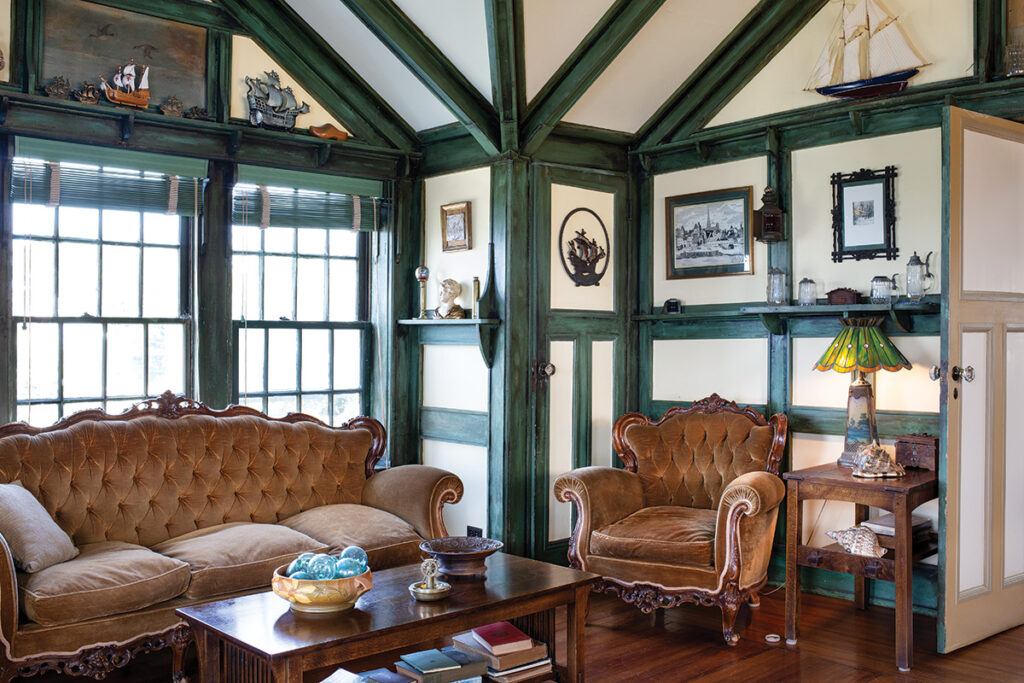
As a teen, Patrick enjoyed rummaging about abandoned villas in the Austrian countryside, where his nuclear-engineer father was stationed. “Before that I lived in Richland, Washington, a prairie town built from scratch in the late 1940s,” he recounts. “There were few old buildings and no stained glass. But, when my family moved to Vienna, when I was 14, I became intoxicated with the architecture and rich-toned stained glass of Imperial Vienna.”
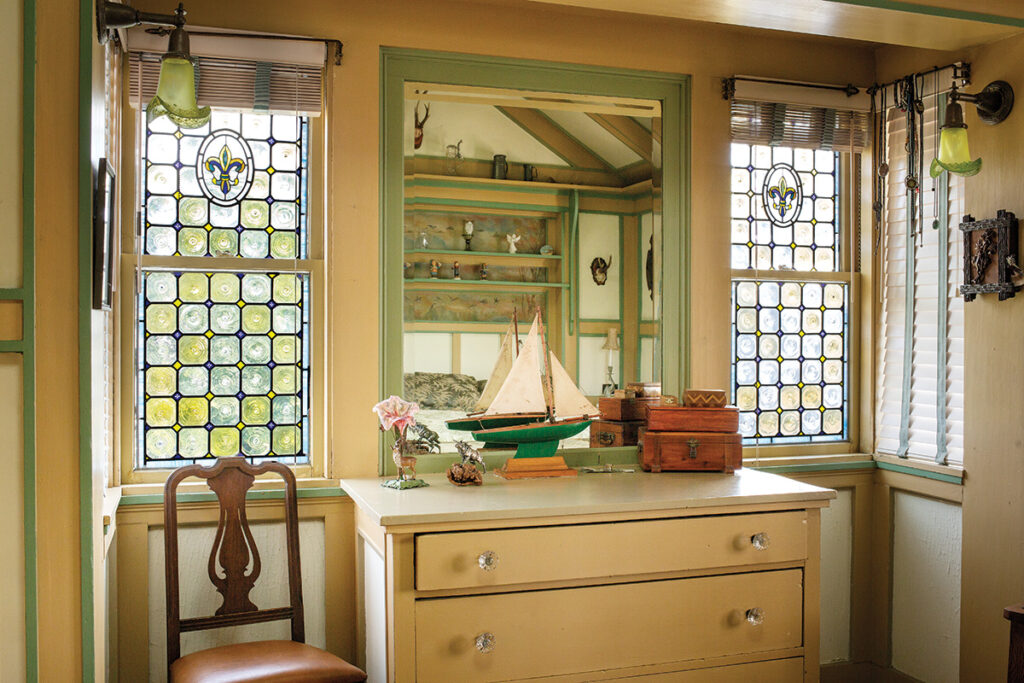
One particular floral medallion, which he pried out of a battered ballroom door, “became the fountainhead of my career. I was determined to restore it myself. So, after college, I learned stained glass just so I could repair that window.”
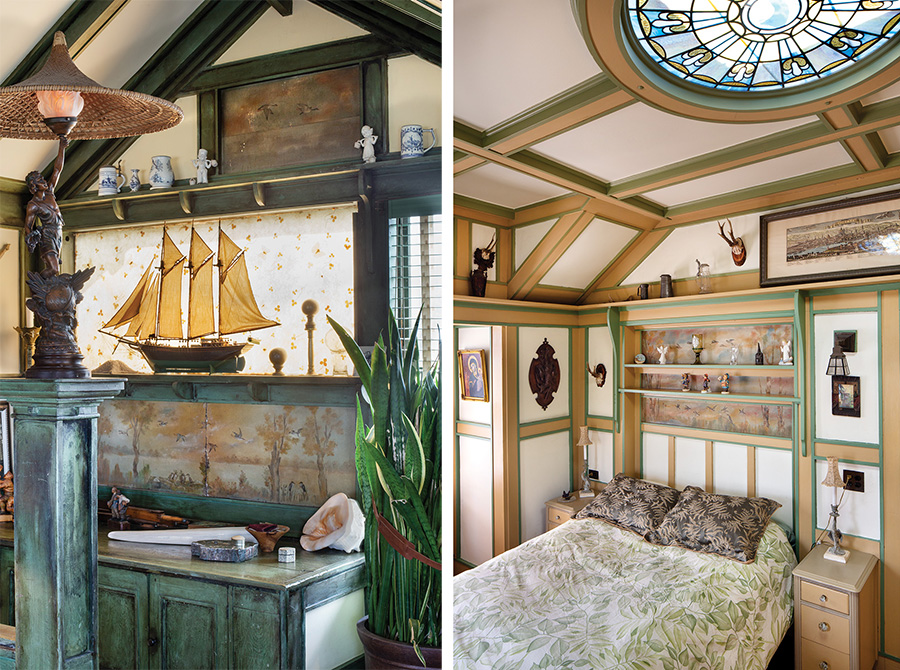
That window today is in Patrick’s dining-room wall, where a medieval look prevails, given a beamed ceiling and heavy chairs that Patrick constructed from oak pews he rescued from a chapel in Manhattan. Austrian influence also explains the exuberant displays of antlers and beer steins, along with religious icons and ornamental objects emblematic of old-Europe hunting lodges. The house fits the Wiener Werkstatte concept of a “Gesamtkunstwerk”: a total work of art, with architecture, glass, ceramics, paintings, and furniture all beautifully crafted.
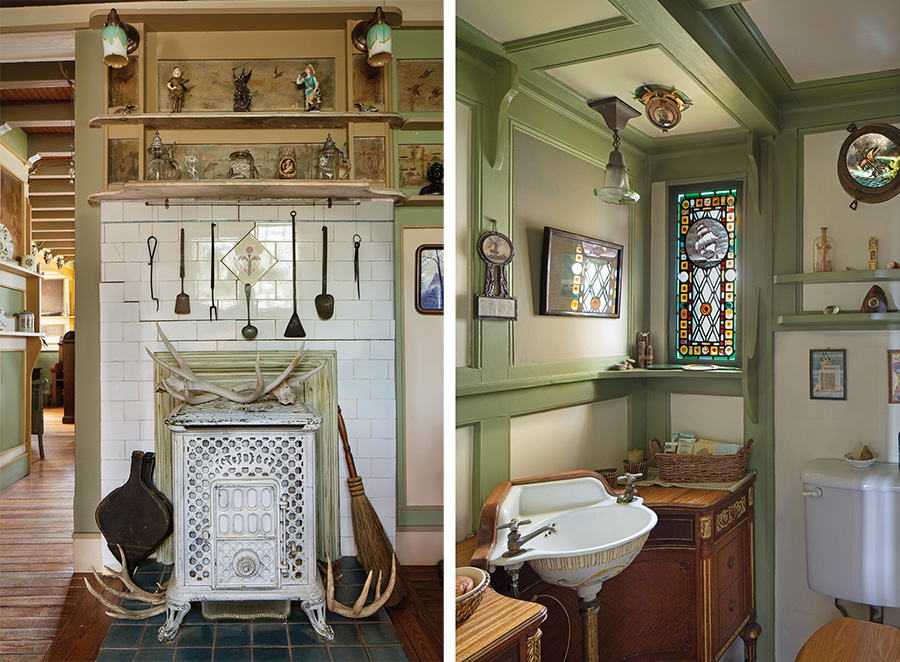
Saltwater had preserved beams and structure, but wood on the ground floor had rotted away. On the floor, a broken cement slab showed dirt through the cracks. Patrick hunted down 150-year-old hardwood floorboards at a salvage yard in New Jersey. “I didn’t want the floor to look new, so we sanded each strip separately before nailing; that way, each strip would be a little off-plane.”
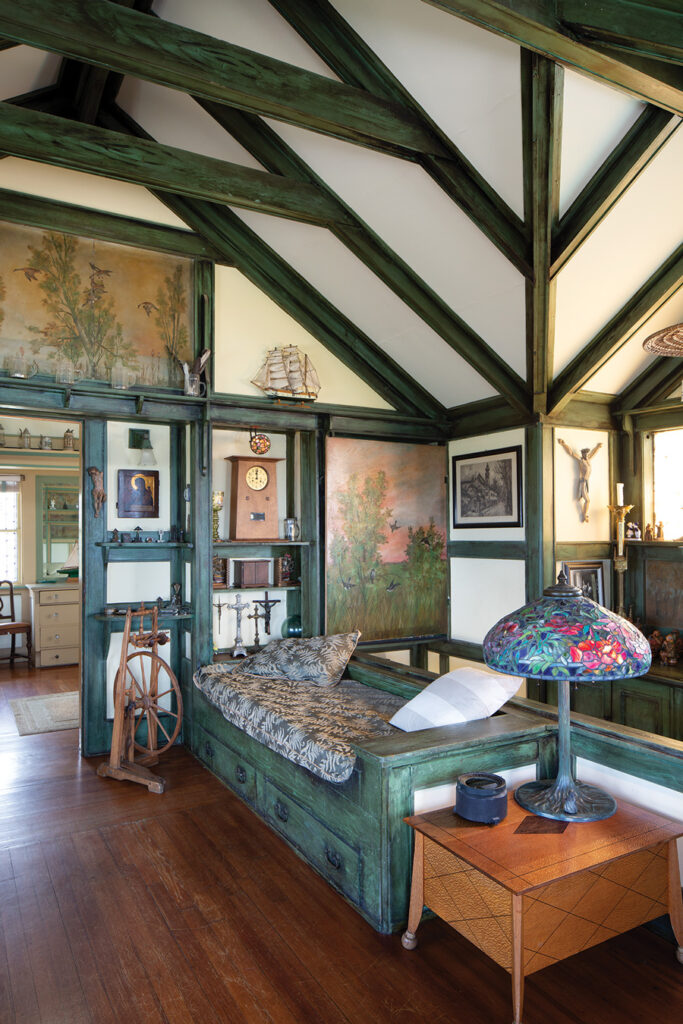
The first-floor ceiling was very low, so he decided to raise it ten inches. He restored tile behind the coal-burning stove, using “same-period tiles salvaged from a nearby demolished house, and adding some 17th-century Delft tile.”
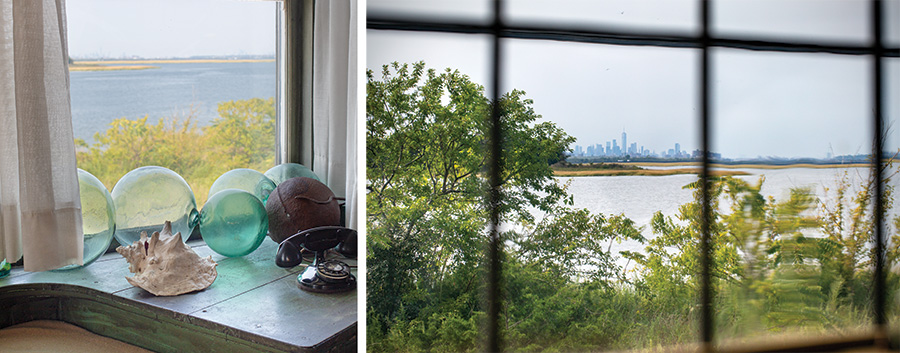
Patrick speculates the cottage may have been built by a shipbuilder; nautical details include snug, built in furniture. It’s one of very few historic cottages left in the Rockaways.“I hope to build a place on the property that will be part of a museum—an education center where students learn about the interconnections among art, the marine environment, and local history.”
Resources
stained glass
Patrick Clark, Sunlites Stained Glass, Queens, NY
(718) 634-3397
www.sunlitesstainedglass.com
flooring
salvage Amighini Architectural Antique & Design Elements, Jersey City, NJ: amighini.net
Also specializing in antique European doors & their restoration




